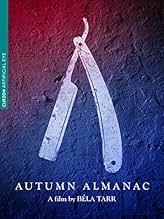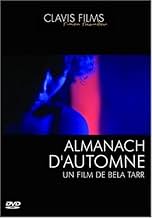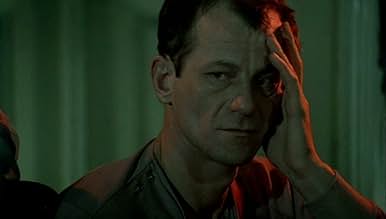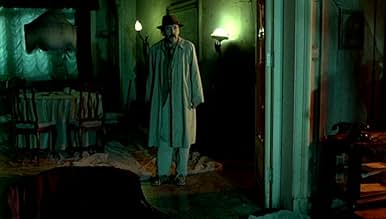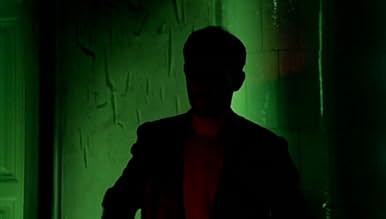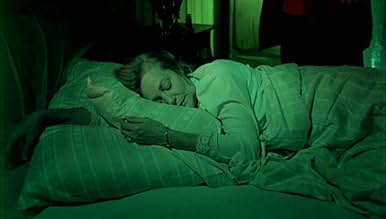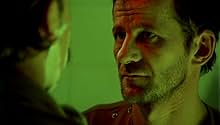IMDb RATING
7.2/10
1.7K
YOUR RATING
A large, claustrophobic apartment is the setting for this intense chamber drama. In this dense setting, the inhabitants of the apartment reveal their darkest secrets, fears, obsessions and h... Read allA large, claustrophobic apartment is the setting for this intense chamber drama. In this dense setting, the inhabitants of the apartment reveal their darkest secrets, fears, obsessions and hostilities.A large, claustrophobic apartment is the setting for this intense chamber drama. In this dense setting, the inhabitants of the apartment reveal their darkest secrets, fears, obsessions and hostilities.
- Awards
- 2 wins total
- Director
- Writer
- All cast & crew
- Production, box office & more at IMDbPro
Storyline
Did you know
- TriviaThe scene in which the camera is positioned below the characters' feet was the idea of cinematographer Sándor Kardos. A special sheet of glass was made for the shot which was tested by stunt men before the actors stepped on it. Because the camera couldn't move properly under the glass a huge mirror was positioned in front of it and the cameraman filmed the image of the mirror instead of the actual set.
- GoofsAs Hedi and Anna fight over the bed, the boom mic moves across the top left corner of the frame.
Featured review
Having first experienced the magic of Béla Tarr's direction in Werckmeister Harmóniák, I was completely entranced by what I still—over a year on—consider the greatest film I've seen. Having seen only Kárhozat since then, I'm not sure what it was that took me so long to get to something else by the Hungarian auteur.
Hédi is the wealthy landlady of a house in which resides her money-demanding son János, her nurse Anna and Anna's boyfriend Miklós, and the elderly and financially troubled teacher Tibor.
The film opens with a quote from Pushkin, referring to the devil's leading of us in circles. This film could be classified as the last of Tarr's first cycle, his every follow-up a collaboration with writer László Krasznahorkai and an exercise in the art of the extreme long take which has characterised his later cinematic career. Knowing only the films of that second cycle, Öszi Almanach presented an exciting opportunity: to see a Tarr film in colour! A devout disciple of his monochrome aesthetic, I was very curious to see what he could do when working with a wider range of pigments. Indeed, it is the colours which one first notices in this film, their usage unusual, atypical, and highly interesting. Many scenes are abundantly blue in hue, appropriately matching the mood of the dilapidated house the film, and its five characters, call home. What is interesting is the appearance of red in these scenes, one character more often than not basked in an ethereal crimson glow apparently at odds with the ambient aquamarine of all else around them. The lighting is certainly a far cry from naturalistic, and one never thinks for a moment that these colours are literal approximations of the many lamps which dot the scenes, rather a metaphysical appropriation of the contrasts, conflicts, and juxtapositions which are the film's relationships. Five characters make for ten propinquities, and each of these is explored in fascinating and comprehensive detail, as well as an objective ambiguity which questions the sincerity of their words, actions, and postulated feelings. Tarr's camera observes often from a distance, whether through a doorway from an adjacent room or from beneath a table, as though cowering, lending credence to the characters' regular ruminations on inflicting harm, even death, upon their fellow occupants. When it is not hiding, the camera circles, slowly encompassing the one-on-one conversations which make up the majority of the film. Twice it attempts particularly unusual angles, as though Tarr is struggling to find a position from which he can understand these characters and the deceit which is so tragically central to their lives. A claustrophobic film, our confinement within the walls of the home suggests a similar imprisonment for the characters, the arrival of three wordless policemen the only glimpse of the wider world we get; not even a window is shown. The house's "family" offers a comment on such, and other, social structures, and the bizarre reality of our alignment to people we purport to hate. The film's final scene, a circular movement which takes in circling dancers, reminds us of the opening quote, and leads us to question if anything has really changed at all. Though virtually without comedy, this conclusion saw me burst out in laughter: perhaps the strangest, most visceral reaction a film has yet provoked from me.
An intriguing look at the bizarreness of humanity's interactions, selfishnesses, and contradictions, Öszi Almanach is more dialogue heavy then Tarr's later works—not a negative considering the strength of these analytical observational conversations. Poetic like all from this filmmaker, a typically beautiful score from Mihály Vig tops off this quiet, contemplative drama that would—were it from just about anyone else—be called a crowning masterpiece.
Hédi is the wealthy landlady of a house in which resides her money-demanding son János, her nurse Anna and Anna's boyfriend Miklós, and the elderly and financially troubled teacher Tibor.
The film opens with a quote from Pushkin, referring to the devil's leading of us in circles. This film could be classified as the last of Tarr's first cycle, his every follow-up a collaboration with writer László Krasznahorkai and an exercise in the art of the extreme long take which has characterised his later cinematic career. Knowing only the films of that second cycle, Öszi Almanach presented an exciting opportunity: to see a Tarr film in colour! A devout disciple of his monochrome aesthetic, I was very curious to see what he could do when working with a wider range of pigments. Indeed, it is the colours which one first notices in this film, their usage unusual, atypical, and highly interesting. Many scenes are abundantly blue in hue, appropriately matching the mood of the dilapidated house the film, and its five characters, call home. What is interesting is the appearance of red in these scenes, one character more often than not basked in an ethereal crimson glow apparently at odds with the ambient aquamarine of all else around them. The lighting is certainly a far cry from naturalistic, and one never thinks for a moment that these colours are literal approximations of the many lamps which dot the scenes, rather a metaphysical appropriation of the contrasts, conflicts, and juxtapositions which are the film's relationships. Five characters make for ten propinquities, and each of these is explored in fascinating and comprehensive detail, as well as an objective ambiguity which questions the sincerity of their words, actions, and postulated feelings. Tarr's camera observes often from a distance, whether through a doorway from an adjacent room or from beneath a table, as though cowering, lending credence to the characters' regular ruminations on inflicting harm, even death, upon their fellow occupants. When it is not hiding, the camera circles, slowly encompassing the one-on-one conversations which make up the majority of the film. Twice it attempts particularly unusual angles, as though Tarr is struggling to find a position from which he can understand these characters and the deceit which is so tragically central to their lives. A claustrophobic film, our confinement within the walls of the home suggests a similar imprisonment for the characters, the arrival of three wordless policemen the only glimpse of the wider world we get; not even a window is shown. The house's "family" offers a comment on such, and other, social structures, and the bizarre reality of our alignment to people we purport to hate. The film's final scene, a circular movement which takes in circling dancers, reminds us of the opening quote, and leads us to question if anything has really changed at all. Though virtually without comedy, this conclusion saw me burst out in laughter: perhaps the strangest, most visceral reaction a film has yet provoked from me.
An intriguing look at the bizarreness of humanity's interactions, selfishnesses, and contradictions, Öszi Almanach is more dialogue heavy then Tarr's later works—not a negative considering the strength of these analytical observational conversations. Poetic like all from this filmmaker, a typically beautiful score from Mihály Vig tops off this quiet, contemplative drama that would—were it from just about anyone else—be called a crowning masterpiece.
- How long is Almanac of Fall?Powered by Alexa
Details
- Runtime1 hour 59 minutes
- Color
- Aspect ratio
- 1.66 : 1
Contribute to this page
Suggest an edit or add missing content


